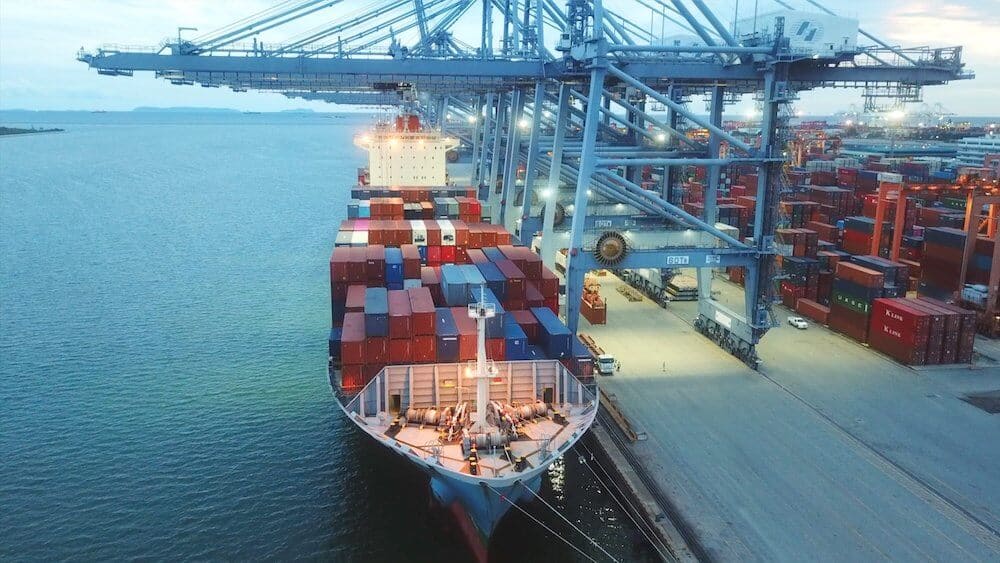Issue 17: White House EO Elicits Mixed Responses from Rail Industry Experts

A Word from LEGACY
Welcome, everyone, to the September 2021 edition of the Legacy Monthly Shipment — the place for breaking logistics industry trends and insights.
After a period of relative recovery, COVID-19 threatens to cause disruption throughout the global supply chain once again. With things as uncertain as they are, we’re sure you’re interested in an insider’s perspective on what’s going on now, and what’s around the corner.
With that in mind, let’s dive in.
Market Update
LMI Registers Historical Levels Indicating Rapid Logistics Expansion
Released on August 2, the July 2021 Logistics Managers’ Index (LMI) came in at 74.5, tying for the third-highest in the history of the index. This marks the sixth consecutive month the Index has been above the 70-point mark – indicating significant increased logistics demand relative to capacity.
The LMI — which is published by the Council of Supply Chain Management Professionals (CSCMP) in collaboration with researchers at multiple accredited universities — is a diffusion index based on eight components that pertain to the logistics industry. These 8 components look at Inventory levels & costs, Warehouse capacity, utilization & price, and Transportation capacity, utilization & price. A score above 50 indicates that logistics is expanding, whereas a reading below 50 indicates that logistics is contracting.
July’s high score is the product of a few factors. The Warehousing Prices index continues to sit at an all-time high of 88.0, with lack of availability capacity due to low inventory rates and rising inventory levels contributing to high prices. These factors have also led to an increase in the Warehouse Utilization index, which currently sits at 70.5. Inventory Cost metrics have decreased slightly from June’s 89.4 reading, but remain strong at 88.8, indicating high costs which will likely have downstream effects on end consumers. This excess inventory has strained Transportation Networks, which sit at 39.4, and conversely increased Transportation Prices, which read 91.0 — up 3.8 points from June.
While July’s Index is telling on its own, we like to use the LMI’s 3-month rolling average as a key indicator of macro level changes happening in the supply chain. Using the current rolling 3-month rolling average, we can make some educated forecasts on what we expect our industry.



KEY LMI INSIGHTS:
- Transportation prices appear to be increasing at a slower rate – signaling a potential flattening especially on the international front. However, worsening US port challenges largely driven by labor issues and massive freight volumes continue to be a bottleneck impacting inbound freight flows. These port challenges have also had downstream effects on interior rail and truck services where capacity and price do remain volatile. Sporadic Covid-related shutdowns across Asia contribute further to the situation and are beginning to impact production schedules.
- Warehouse prices are going up while Warehouse capacity is in flux – as capacity is very tight at most north American ports of entry, while some interior warehouses see capacity growing. No doubt this is due to heavy outbound sales volume and slower inbound replenishment due to worsening congestion. There is a (more-than) full pipeline of freight moving inbound, and we expect congestion to worsen through the end of the year.
- Macro-Level Flattening with High Micro-Level Volatility – Does this signal a “New Normal”? The LMI and other factors are telling us we may be seeing the transportation market generally flattening out with respect to price, even as we move into peak season. While we all continue to experience instability in the short term, time will tell if this flattening indicates the establishment of a new pricing floor in the long-term, or if the market will recorrect back to pre-2019 levels. A key factor in this long term will be whether large-scale structural improvements to US logistics infrastructure will become a reality, as current infrastructure is proving incapable of handling the demands placed on it.
Also in Today’s Shipment:
- History repeats itself as new COVID-19 restrictions in Vietnam and China threaten the global supply chain.
- Industry experts react to the White House’s attempt to increase competition in rail.
- ECommerce fulfillment network acquisitions expand Maersk’s land-side logistics operation.
- Container shortage continues to cause worldwide supply chain disruption — but when will it stop?
- Legacy hosts webinar on surviving disruption in a post-COVID world.
In the News

China and Vietnam Announce New COVID Restrictions in Wake of Delta Variant
In an official statement released July 18, the Vietnamese Prime Minister Pham Minh Chinh announced that its entire southern region — including the Mekong Delta and Ho Chi Minh City — would enter a two-week lockdown in an effort to curb rapidly rising COVID-19 case counts. A July 31 update extended the lockdown, which, as of August 9, remains in effect. China has taken similar precautions over the past month in order to contain outbreaks of the fast-spreading Delta variant, with multiple cities adding rounds of mass testing to prevent the transmission of infection.
These COVID-19-related restrictions have had serious ramifications throughout the global supply chain, with The Loadstar reporting a pileup of over 100,000 TEUs at Ho Chi Minh City’s Cat Lai port and congestion at the Chinese ports of Shanghai and Ningbo. The deteriorating situation has led to a growing number of delayed sailings, with Maersk revealing that 14 trans-Pacific sailings would be delayed over the next 10 weeks.
Given the circumstances, some experts have expressed concern that China stands on the precipice of a second nationwide lockdown, especially after seeing its highest daily figure of COVID-19 patients in the current outbreak on August 5. Assuming that both China and Vietnam’s restrictions successfully curtail the Delta outbreak, the ongoing container equipment shortage will likely reach an inflection point as factories reopen and manufacturing comes back online.

White House EO Elicits Mixed Responses from Rail Industry Experts
On July 9, the White House issued an Executive Order (EO) addressing corporate consolidation in an effort to strengthen competition across multiple markets, agriculture, healthcare, shipping and transportation. In particular, the EO called upon the Surface Transportation Board (STB) — an independent federal agency responsible for the economic regulation of freight rail — to “further competition in the rail industry and to provide accessible remedies for shippers.”
The EO has been subject to criticism from various groups, including the Association of American Railroads (AAR). In a July 9 statement, AAR president and CEO Ian Jefferies, asserted that:
“Competition is alive and well in the rapidly changing freight transportation market, with nearly three-quarters of all U.S. freight shipments moving by a mode of transportation beside rail.”
Jefferies also argued that the EO would actively hinder the freight rail industry’s economic recovery from the ongoing COVID-19 pandemic, claiming that the STB mandating forced switching would “put railroads at a severe disadvantage to freight transportation providers that depend upon tax-payer funded infrastructure.”
Some supply chain experts even see the EO as an opportunity. In an article for Supply Chain 24/7, Peter Moore, adjunct professor at Georgia College, proposed the nationalization of railroads, citing the fact that the now-defunct Interstate Commerce Commission was able to open competition in the trucking and airline industries in the 1980s by granting 48 state authorities. According to Moore’s reasoning, nationalizing railroads — and, as a result, introducing regulation such as open reciprocal shipping — could be the key to increasing competition and creating more favorable terms for shippers.

Maersk Takes on Land-Side Logistics, eCommerce with New Acquisitions
Container shipping giant A.P. Moller Maersk has made another move in an effort to cement its hegemony. In an August 6 press release, Maersk announced its acquisition of Visible Supply Chain Management (SCM), a U.S.-based B2C/eCommerce logistics and parcel delivery company. The acquisition nets Maersk nine fulfillment centers across the U.S., significantly expanding its warehouse network and enabling the company to reach 75% of U.S. customers within 24 hours, and 95% within 48 hours.
In the same release, Maersk also declared its intention to acquire B2C Europe Holding B.V., an eCommerce logistics company that specializes in parcel delivery services in Europe.
These acquisitions, as well as those of Vandegrift in 2019 and Performance Team and KGH Customs Service in 2020, are part of a concerted effort by Maersk — traditionally an ocean carrier — to expand its land-side logistics operation, shore up its eCommerce fulfillment operation, and develop an end-to-end logistics network for shippers.

Where Have All the Containers Gone? Making Sense of the Container Shortage
The global shipping container shortage has been a source of acute frustration for importers and exporters alike for the better part of two years, despite the fact that container production volumes are expected to hit record levels this year. In a recent article for the Wall Street Journal (WSJ), Paul Berger spoke to industry experts about the various factors contributing to this shortage.
According to John Fossey, head of container equipment and leasing research for Drewry, “In principle, there are more than enough containers to handle global container volumes… In practice, availability in several parts of the world has become incredibly tight because large volumes are stuck in the wrong place.” In this case, what “stuck in the wrong place” really means is “idling in backlogs at major ports and inland cargo facilities.”
The shortage, which began in the early months of 2020 following the initial worldwide outbreak of COVID-19, came about as shipping lines canceled routes from Asia to North America. By the summer of 2020, demand suddenly came back online, forcing U.S. importers to scramble to send containers back to exporters in China to be refilled. Ongoing port congestion, major weather events such as the ONE Apus incident, man-made events such as the Suez Canal blockage and additional COVID-19 restrictions have slowed the movement of shipments — and, as a result, containers — on the ocean carrier side of the equation.
Similarly, rail network congestion and shortage of truck chassis, drivers and warehouse workers have led to backups at cargo facilities on the domestic transport side. According to the WSJ report, truckload carrier Schneider National’s average unload dwell time for customers using containers was “up 70% in the second quarter over the same period in 2019 because of the shortage of workers to handle the boxes.” This situation has drawn the attention of regulators, with members the Federal Maritime Commission raising “concerns about the reliance by U.S. exporters on containers and truck chassis that are made in China.”
At the end of the day, most importers and exporters alike simply want to know when they can expect the situation to return to some semblance of normalcy. Which leads us to our final story…
Legacy Assesses the Shipping Dilemma
In a recent webinar hosted in partnership with the Sports & Fitness Industry Association, Russ Romine, VP of Transportation at Legacy Supply Chain, answered shippers’ three biggest questions: How did we get where we are today, how do we move forward and when can expect things to return to normal?
Watch the on-demand webinar for answers to those questions, as well as additional insights about the nature of COVID-19 disruption and tips on how to overcome it.
We hope you’ve enjoyed this month’s Shipment, and we’ll be sure to keep you apprised of goings-on. In the meantime, we recommend that you visit our blog or resource center for additional logistics tips, insights and expertise.
Check out Legacy’s VP of Transportation discuss shipping dilemmas>>>
Stay safe out there, friends, and we’ll see you next month.
Get Insights. Stay Ahead.
Get the latest news and insights via email on warehouse improvement, transportation optimization, labor strikes and international shipping rate changes.Popular Posts
Search Posts
-
2024 Q1 Freight Landscape: Trends, Challenges, and Predictions
As the first quarter of 2024 comes to an end, here are some observations over the past few months as well as predictions about the trucking...
+ Read more -
Baltimore Bridge Impact Assessment – Update
Following the recent Baltimore Bridge collapse and subsequent port closures, we want to keep our customers informed about the situation and...
+ Read more -
Global Momentum Builds for Charge on Global Shipping Sector’s CO2 Emissions
A growing coalition of 47 countries, including key players like the European Union, Canada, Japan, and various Pacific Island nations, is...
+ Read more










